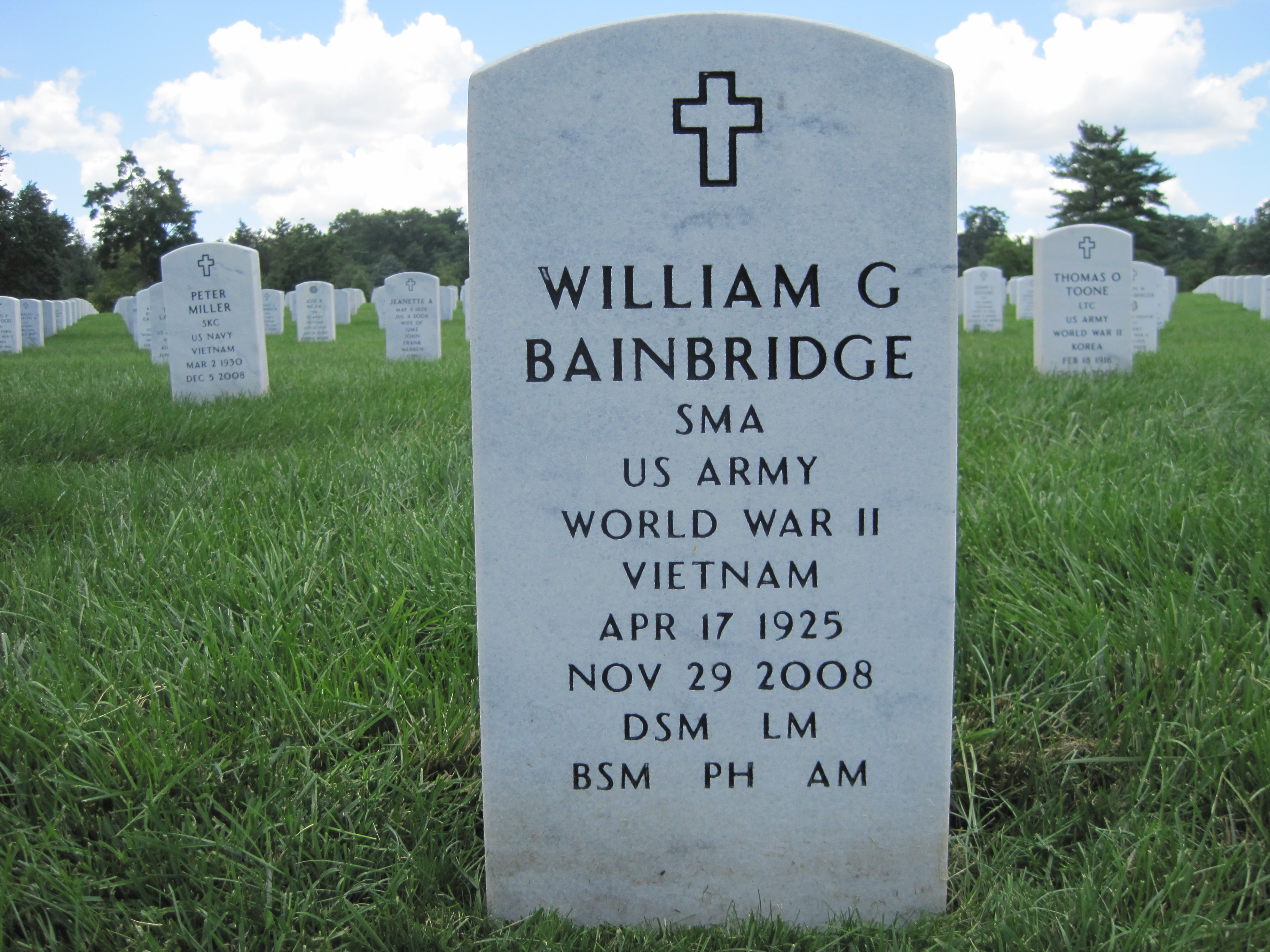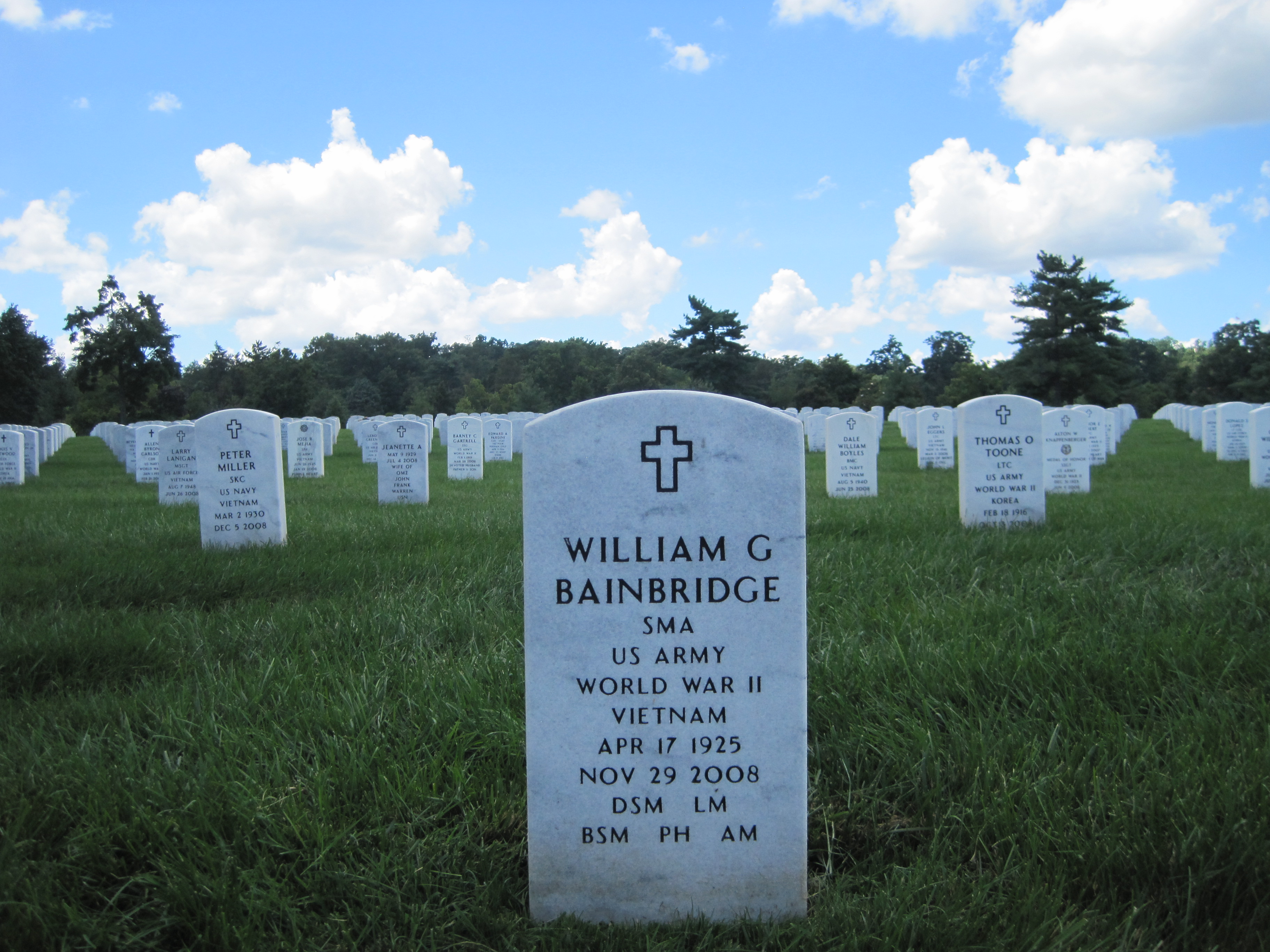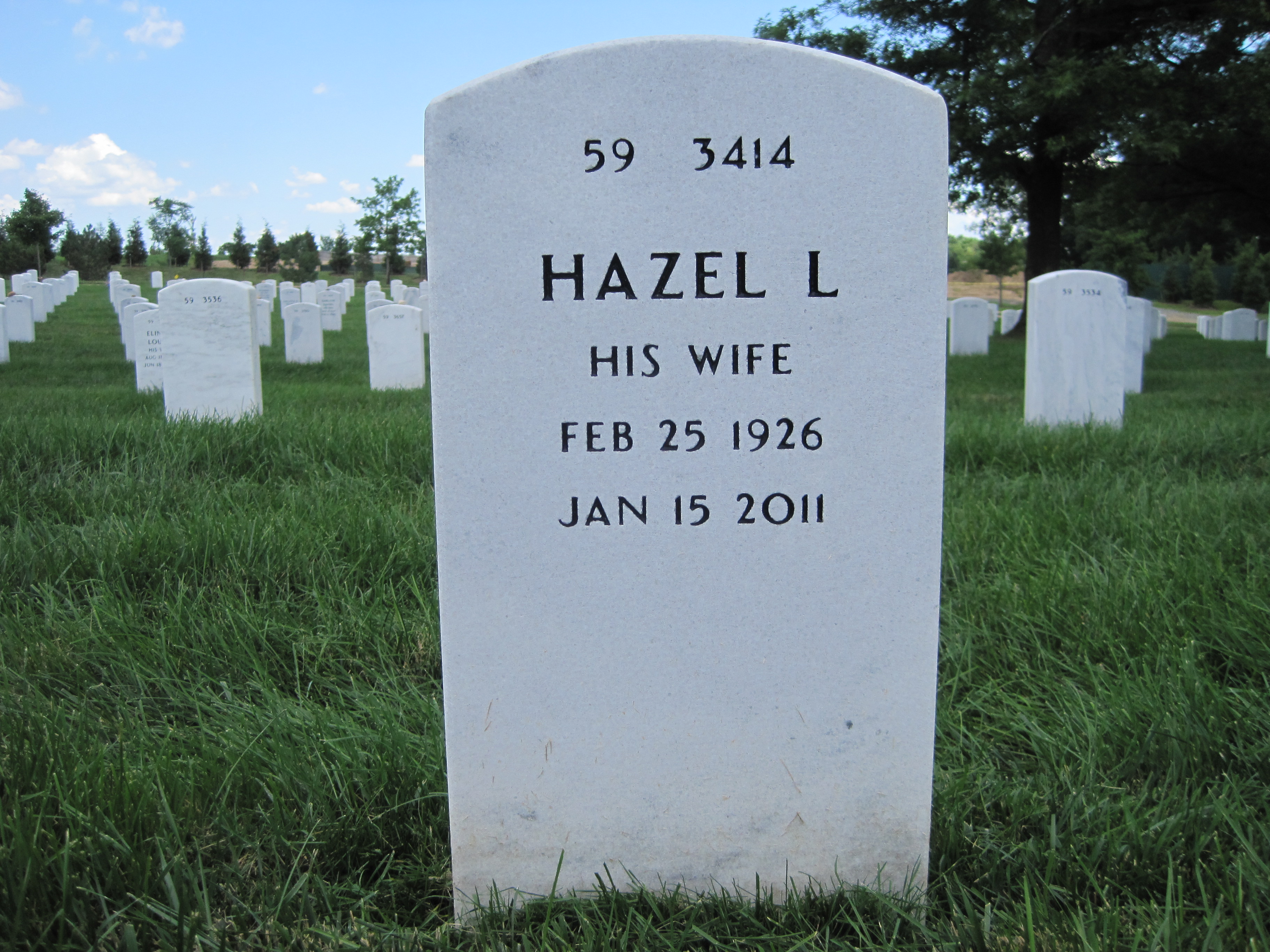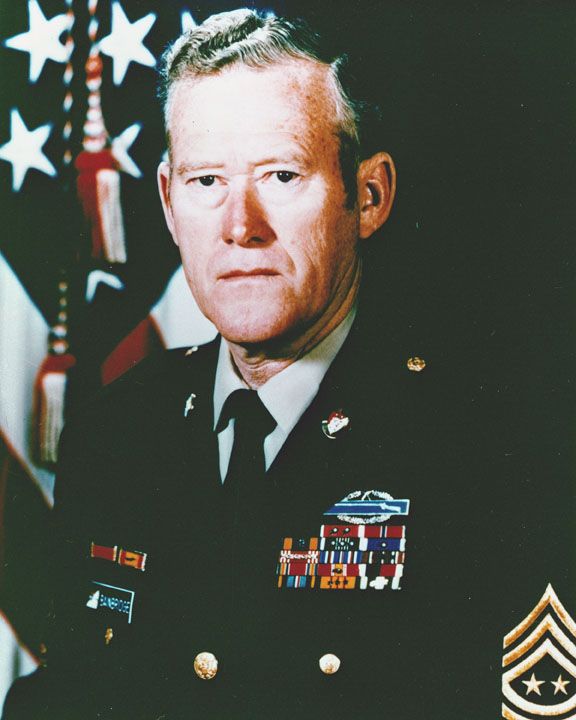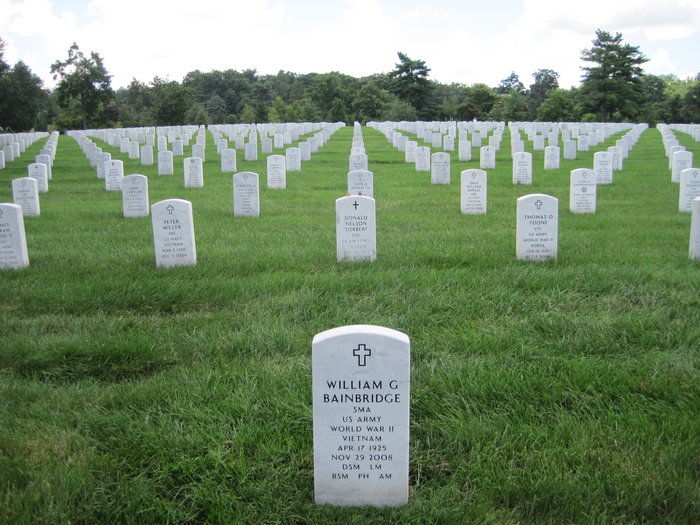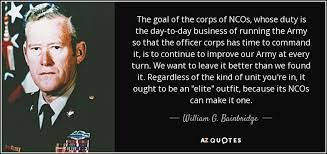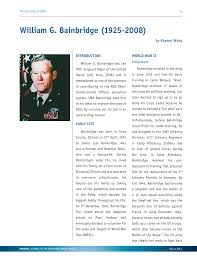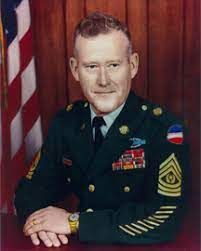Enlisted: June 1943 - U.S. Army*
Married: June 20, 1945 at Cambridge, IL
Wife: Hazel L. Bainbridge (nee Smith)
Daughters: Kathryn L. Koop (Steve) and Mary B. Moore (Paul)
Grandchildren: Karrie and Ryan
Great-grandchildren: Shane, Kodie, Khamry and Payton
Deceased:
Granddaughter: Kristine (-July 2008)
Brother: James L. Bainbridge (-June 10 1992)
Father: (-1930)
Step-father: Leon E Simkins (Mar. 9, 1908-June 23,1992)
* He took basic training at Camp Wallace, near Galveston, TX and then volunteered to be a cadet in the Army Air Corps. He took flying lessons at the University of North Dakota and pre-flight Training at Santa Ana, CA, but in March 1944 as the Allied forces prepared for the Invasion of Europe, he was one of 35,000 cadets transferred to ground duty. Bainbridge wound up in Company A, 1st Battalion, 423rd Infantry Regiment, 106th Division, in April 1944. As a Sergeant Squad Leader, Bainbridge was captured by the Germans at the Battle of the Bulge in December 1944. He was interned at Stalag 9B Bad Orb, and Stalag 9A in Siegenheim until liberated on Good Friday 1945. Bainbridge went into Bad Orb at 140 Ibs. and came out weighing only 89 Ibs. Discharge in December 1945. In June 1951, he was recalled to active duty for the Korean War. Deciding to remain in the Army, Sgt. Major Bainbridge rose quickly in rank. He was promoted to Sergeant Major in February 1963. As Sgt. Major of the 1st Battalion 28th Infantry, 1st Infantry Division at Fr. Riley KS, Bainbridge accompanied his unit to Vietnam in October 1965. In 1966 he became the Sgt. Major of II Field Forces, Vietnam. After Vietnam Sgt. Major Bainbridge was assigned to Fort Benning, GA. Then in 1967 he became First U.S. Army Sgt. Major at Ft. Meade, MD. In 1968 he went to Hawaii to be the Sgt. Major of the U.S. Army, Pacific. In 1972 he was reassigned to Ft. Bliss, TX, where he became the first Sergeant Major of the newly created U.S. Army Sergeant Major Academy, the capstone school of the Armys noncommissioned officer education system. In 1975 Bainbridge was selected to the fifth Sergeant Major of the Army. During the interview process before his selection, Bainbridge was asked why he hadn't obtained more then one year of college. "Ive got a doctoratein Soldiering", he replied, "and I think thats important." General Fred Weyand, Chief of Staff of the Army, picked him for the job. As Sgt. Major of the Army, Bainbridge was the chief enlisted advisor to the Armys Chief of Staff. He held that job for four years, serving under first General Weyand and later General Bernard Rogers. At the time the SMAs tour at the Pentagon ran concurrently with the tour of the Chief of Staff who had selected him. Bainbridge was the first to break the mold. Bainbridge retired in July 1979 after thirty-one years of Army services.
At his retirement he encouranged soldiers to remember their history.
"I want to give my heartfelt thanks," he concluded, "to those who gave this Illinois farm boy a chance to serve our great nation."
Upon his retirement, he was the first former enlisted man to be appointed an officer at the Soldiers and Airmans Home in Washington, D.C. Bainbridge served in this capacity until July 1991, retiring to Palm Bay, FL. As an Army noncommissioned officer, Sgt. Major Bainbridge never forgot his hardworking rural roots. He was a "people-oriented" leader who believed that good soldiers were made by good leaders. His emphasis was always on the enlisted soldier and in every assignment he was given, from squad leader in the Bulge to Sergeant Major of the Army, Bainbridge always went out of his way to look after the welfare of his soldiers. His style was characterized by the fact that people did not so much feel that they worked "for" Bainbridge, as much as they felt they worked "with" him. He took his attitude with him to the Soldiers Home where, he once joked, his "squad leaders" were all 65 years old.
His awards and decorations include:ten Good Conduct Medals, the Distinguished Service Medal, Legion of Merit (with Oak Leaf Clusters), Bronze Star, Purple Heart (with Oak Leaf Cluster), Air Medal, Army Commendation Medal (with Oak Leaf Clusters), Good Conduct Medal, American Campaign Medal, European-North African-Middle Eastern Campaign Medal, World War II Victory Medal, National Defense Service Medal, Army of Occupation Medal, Armed Forces Expeditionary Medal, Vietnam Service Medal, Prisoner of War Medal, Republic of Vietnam Campaign Medal, and the Combat Infantryman Badge, second award.
For more information about his career see the following website: http://usasma.armylive.dodlive.mil/?page_id=736
In 1995 Fawcett-Columbine published Bainbridges autobiography, Top Sergeant. Epitaph: "Called Up to Be a Soldier in the Army of the Lord.
Enlisted: June 1943 - U.S. Army*
Married: June 20, 1945 at Cambridge, IL
Wife: Hazel L. Bainbridge (nee Smith)
Daughters: Kathryn L. Koop (Steve) and Mary B. Moore (Paul)
Grandchildren: Karrie and Ryan
Great-grandchildren: Shane, Kodie, Khamry and Payton
Deceased:
Granddaughter: Kristine (-July 2008)
Brother: James L. Bainbridge (-June 10 1992)
Father: (-1930)
Step-father: Leon E Simkins (Mar. 9, 1908-June 23,1992)
* He took basic training at Camp Wallace, near Galveston, TX and then volunteered to be a cadet in the Army Air Corps. He took flying lessons at the University of North Dakota and pre-flight Training at Santa Ana, CA, but in March 1944 as the Allied forces prepared for the Invasion of Europe, he was one of 35,000 cadets transferred to ground duty. Bainbridge wound up in Company A, 1st Battalion, 423rd Infantry Regiment, 106th Division, in April 1944. As a Sergeant Squad Leader, Bainbridge was captured by the Germans at the Battle of the Bulge in December 1944. He was interned at Stalag 9B Bad Orb, and Stalag 9A in Siegenheim until liberated on Good Friday 1945. Bainbridge went into Bad Orb at 140 Ibs. and came out weighing only 89 Ibs. Discharge in December 1945. In June 1951, he was recalled to active duty for the Korean War. Deciding to remain in the Army, Sgt. Major Bainbridge rose quickly in rank. He was promoted to Sergeant Major in February 1963. As Sgt. Major of the 1st Battalion 28th Infantry, 1st Infantry Division at Fr. Riley KS, Bainbridge accompanied his unit to Vietnam in October 1965. In 1966 he became the Sgt. Major of II Field Forces, Vietnam. After Vietnam Sgt. Major Bainbridge was assigned to Fort Benning, GA. Then in 1967 he became First U.S. Army Sgt. Major at Ft. Meade, MD. In 1968 he went to Hawaii to be the Sgt. Major of the U.S. Army, Pacific. In 1972 he was reassigned to Ft. Bliss, TX, where he became the first Sergeant Major of the newly created U.S. Army Sergeant Major Academy, the capstone school of the Armys noncommissioned officer education system. In 1975 Bainbridge was selected to the fifth Sergeant Major of the Army. During the interview process before his selection, Bainbridge was asked why he hadn't obtained more then one year of college. "Ive got a doctoratein Soldiering", he replied, "and I think thats important." General Fred Weyand, Chief of Staff of the Army, picked him for the job. As Sgt. Major of the Army, Bainbridge was the chief enlisted advisor to the Armys Chief of Staff. He held that job for four years, serving under first General Weyand and later General Bernard Rogers. At the time the SMAs tour at the Pentagon ran concurrently with the tour of the Chief of Staff who had selected him. Bainbridge was the first to break the mold. Bainbridge retired in July 1979 after thirty-one years of Army services.
At his retirement he encouranged soldiers to remember their history.
"I want to give my heartfelt thanks," he concluded, "to those who gave this Illinois farm boy a chance to serve our great nation."
Upon his retirement, he was the first former enlisted man to be appointed an officer at the Soldiers and Airmans Home in Washington, D.C. Bainbridge served in this capacity until July 1991, retiring to Palm Bay, FL. As an Army noncommissioned officer, Sgt. Major Bainbridge never forgot his hardworking rural roots. He was a "people-oriented" leader who believed that good soldiers were made by good leaders. His emphasis was always on the enlisted soldier and in every assignment he was given, from squad leader in the Bulge to Sergeant Major of the Army, Bainbridge always went out of his way to look after the welfare of his soldiers. His style was characterized by the fact that people did not so much feel that they worked "for" Bainbridge, as much as they felt they worked "with" him. He took his attitude with him to the Soldiers Home where, he once joked, his "squad leaders" were all 65 years old.
His awards and decorations include:ten Good Conduct Medals, the Distinguished Service Medal, Legion of Merit (with Oak Leaf Clusters), Bronze Star, Purple Heart (with Oak Leaf Cluster), Air Medal, Army Commendation Medal (with Oak Leaf Clusters), Good Conduct Medal, American Campaign Medal, European-North African-Middle Eastern Campaign Medal, World War II Victory Medal, National Defense Service Medal, Army of Occupation Medal, Armed Forces Expeditionary Medal, Vietnam Service Medal, Prisoner of War Medal, Republic of Vietnam Campaign Medal, and the Combat Infantryman Badge, second award.
For more information about his career see the following website: http://usasma.armylive.dodlive.mil/?page_id=736
In 1995 Fawcett-Columbine published Bainbridges autobiography, Top Sergeant. Epitaph: "Called Up to Be a Soldier in the Army of the Lord.
Inscription
SMA
US ARMY
WORLD WAR II
VIETNAM
DSM LM
BSM PH AM
Family Members
Sponsored by Ancestry
Advertisement
Advertisement












